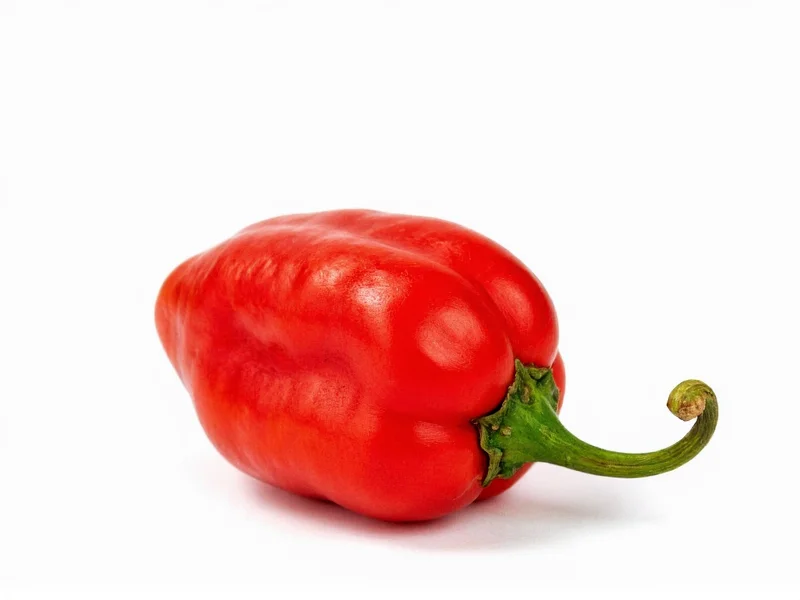Understanding the Guajillo Pepper
When exploring what is guajillo pepper, it's essential to recognize this as one of Mexico's most important dried chiles. Harvested from the mirasol pepper when ripe and then sun-dried, guajillo peppers transform from bright red to a rich mahogany hue while developing their distinctive flavor profile. These slender, smooth-skinned chiles measure approximately 3-6 inches long and 1-2 inches wide, with a flattened shape that makes them easy to identify among other dried chiles.
Flavor Profile and Heat Level
One of the most frequently asked questions about what is guajillo pepper concerns its heat level. Guajillo peppers register between 2,500-5,000 Scoville Heat Units (SHU), placing them in the medium heat category—milder than cayenne but hotter than poblano peppers. Their flavor profile is complex, featuring:
- Tangy, slightly fruity notes reminiscent of berries and tea
- Subtle smokiness without being overpowering
- Earthy undertones with a hint of citrus
- Mild sweetness that balances the heat
| Pepper Type | Scoville Units | Flavor Profile | Common Uses |
|---|---|---|---|
| Guajillo | 2,500-5,000 | Tangy, berry-like, mild smokiness | Sauces, moles, adobos |
| Ancho | 1,000-2,000 | Sweet, raisin-like, mild heat | Moles, stews, rubs |
| Chipotle | 2,500-8,000 | Smoky, spicy, earthy | Salsas, marinades, soups |
| Pasilla | 1,000-2,500 | Prune-like, tobacco notes | Mojo sauces, braises |
Historical Significance and Origin
The guajillo pepper has been cultivated in Mexico for centuries, with archaeological evidence suggesting chili peppers were domesticated as early as 6000 BCE. The name "guajillo" comes from the Spanish word "guaja," meaning small seed pod, referring to the pepper's numerous small seeds. In traditional Mexican cooking, guajillo peppers form the foundation of many regional dishes, particularly in central and northern Mexico where they grow abundantly.
Culinary Applications
Understanding what is guajillo pepper used for reveals its versatility in the kitchen. Chefs and home cooks use guajillo peppers in numerous ways:
- Sauces: The primary ingredient in traditional Mexican red sauces, including the famous salsa roja
- Moles: Contributes depth and complexity to various mole varieties
- Marinades: Creates flavorful adobos for meats, particularly chicken and pork
- Stews: Adds richness to pozole and other traditional Mexican stews
- Spice Blends: Forms part of many Mexican spice mixtures and rubs
When preparing guajillo peppers, most recipes call for toasting them lightly in a dry skillet before rehydrating in hot water for 15-20 minutes. This process enhances their flavor and makes them easier to blend into smooth sauces.
Nutritional Benefits
Exploring guajillo pepper nutrition reveals several health benefits. Like other chili peppers, guajillos contain capsaicin, which has been studied for potential health benefits including pain relief and metabolism boost. They're also rich in:
- Vitamin A (from beta-carotene) - essential for vision and immune function
- Vitamin C - a powerful antioxidant
- Vitamin B6 - important for brain health
- Dietary fiber - supports digestive health
- Iron - crucial for blood health
Selecting and Storing Guajillo Peppers
When shopping for where to buy guajillo peppers, look for these quality indicators:
- Bright, deep red color without browning or fading
- Smooth, unbroken skin without cracks
- Flexible texture (not brittle)
- Pleasant, slightly fruity aroma
Store dried guajillo peppers in an airtight container in a cool, dark place where they'll maintain quality for 6-12 months. For longer storage, keep them in the refrigerator or freezer.
Substituting Guajillo Peppers
When you need a guajillo pepper substitute, consider these alternatives based on what aspect of guajillo you're trying to replicate:
- For heat and color: A combination of New Mexico chiles and a touch of cayenne
- For flavor profile: Ancho peppers with a splash of vinegar for tanginess
- For medium heat: Cascabel peppers (though these have a nuttier flavor)
- For recipes requiring smooth texture: California chiles (milder but similar texture)
Understanding the difference between guajillo pepper vs ancho is crucial for proper substitution. While both are dried Mexican chiles, anchos are dried poblanos with a sweeter, fruitier flavor and lower heat level (1,000-2,000 SHU) compared to guajillos' tangier profile and slightly higher heat.
Traditional Recipes Featuring Guajillo Peppers
Guajillo peppers shine in numerous traditional Mexican dishes:
- Salsa de Guajillo: A simple sauce of rehydrated guajillos blended with garlic, cumin, and oil
- Mole Rubio: The "red mole" that uses guajillos as its primary chile component
- Adobo Sauce: The base for chipotle in adobo, though guajillos provide a milder alternative
- Chiles en Nogada: Some regional variations incorporate guajillo in the sauce
- Carne Adovada: New Mexican specialty featuring meat marinated in guajillo-based adobo
Processing and Preparation Tips
Proper preparation maximizes the flavor of guajillo peppers. Before using, always:
- Remove stems and seeds (unless you want maximum heat)
- Toast lightly in a dry skillet for 15-30 seconds per side
- Rehydrate in hot water for 15-20 minutes
- Blend with other sauce ingredients until smooth
For the smoothest sauces, pass the blended mixture through a fine-mesh strainer to remove any remaining skin fragments.











 浙公网安备
33010002000092号
浙公网安备
33010002000092号 浙B2-20120091-4
浙B2-20120091-4